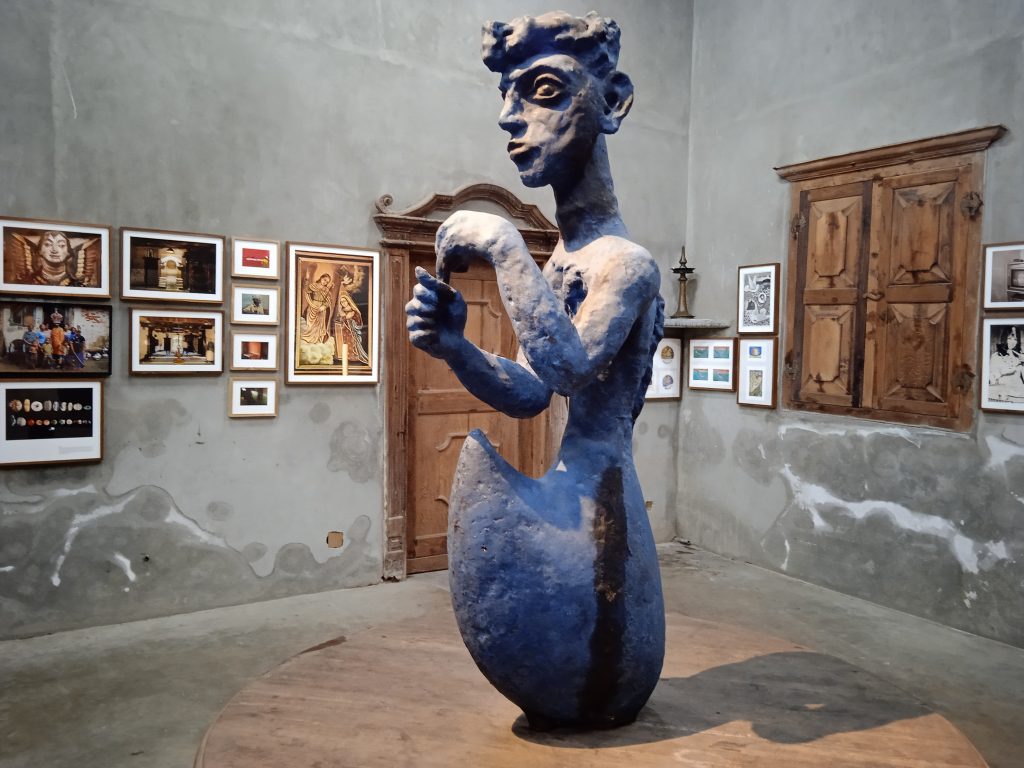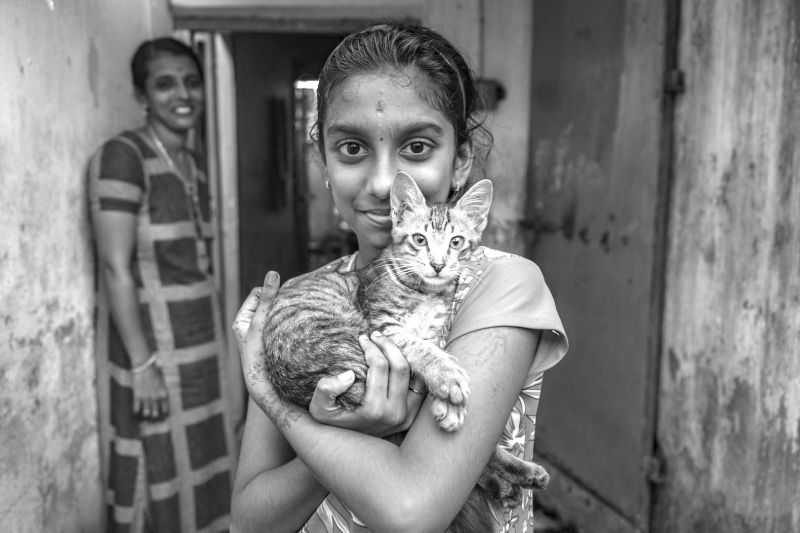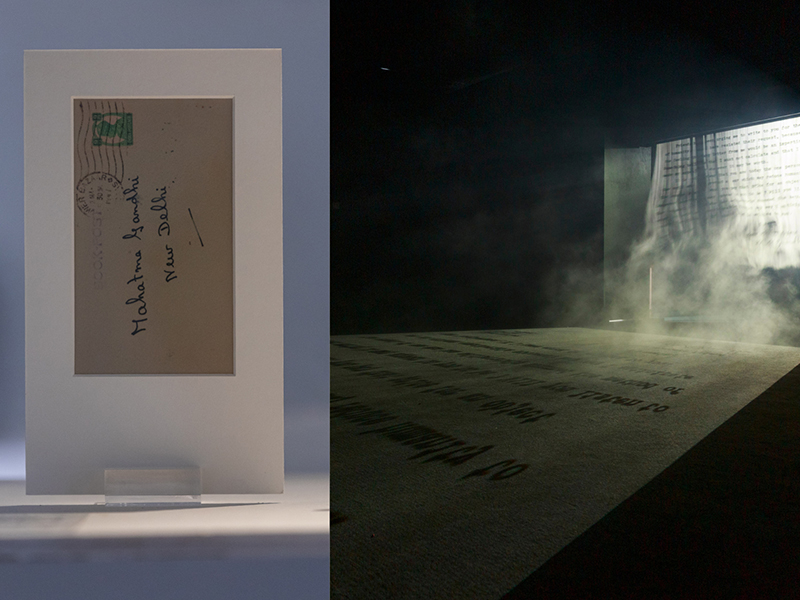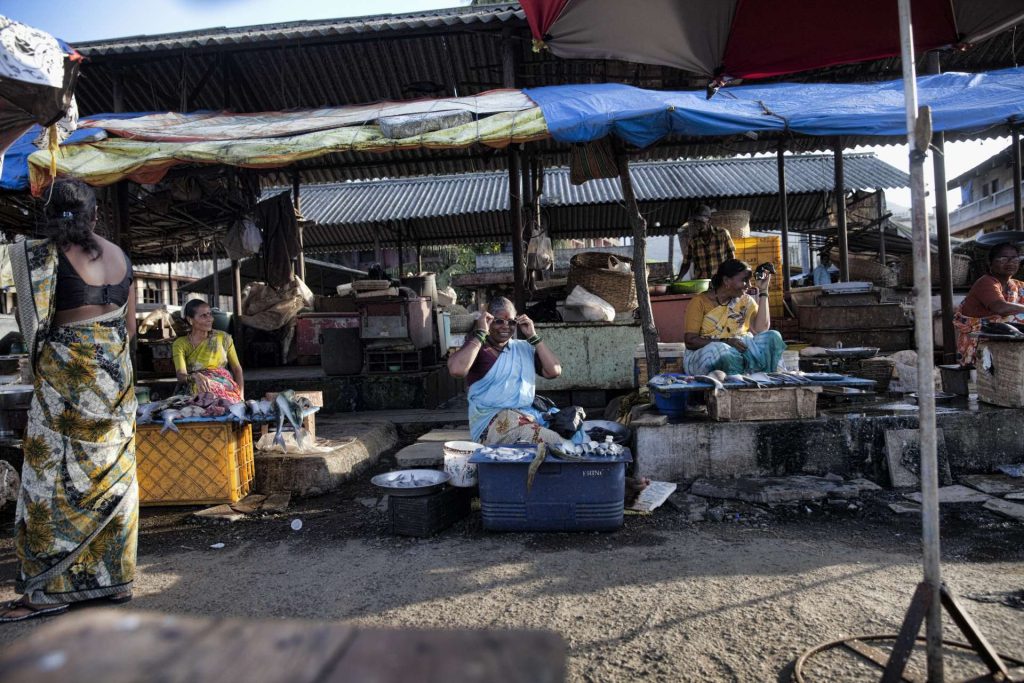Krispin Joseph PX
Venetian merchant Marco Polo’s (1253-1324) book ‘the customs of the kingdoms of India shared a fabulous array of stories from sailors and merchants about peoples of the region, some reliable, some wholly implausible, but all fascinating about the Indian subcontinent.
In the first chapter of the book ‘Hormuz, Persia and the Land of the Assassins’ he mentions Indian ships: ‘merchants come here by ship from India, bringing all sorts of spices and precious stones and pearls and cloths of silks and gold and elephants tusks and many other wares’. In the third chapter of this book, Marco Polo mentioned the Malabar coast: ‘You may take it for a fact that it is the richest and most splendid province in the world’. Marco Polo’s work introduced Europeans to a world almost totally closed to them and profoundly impacted centuries of quests and imagination.
These two mentions of Indian- the Malabar- coast heritage of spices and other materials bring many foreign countries here. Sea is the only access point for these peoples, and colonialism comes through the sea. Many travellers worldwide, mainly from Greece and Rome, came to Kerala in different periods and were mentioned in their texts: Megasthenes, an ambassador from Greek (4th century BC), Pliny (1st century A.D.), Ptolemy (2nd Century A.D.), are the classical travellers who mentioned about Kerala in their text. The history of Kerala undoubtfully connects with foreign trade and commerce.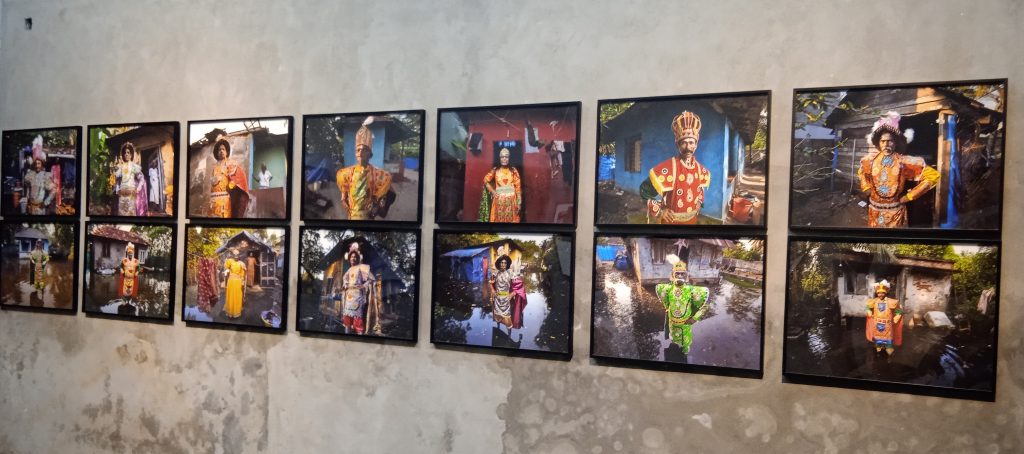
The Show, ‘Sea A Boiling Vessel’, presented by Aazhi Archives in Kashi Hallegua House, Jew Town, Mattancherri, brings Kerala history and the story of seafarers in a visual language. Aazhi Archives (AA) is a collective of artists, writers, and scholars engaged in education and art practice through research, art-making, writing, curating, and publications. Aazhi Archives to bring them into creative conversation with each other to focus on the cosmopolitan pasts and traditions of the Kerala region.
In this show, Aazhi Archives brings artists and collectives from various disciplines.
Sea (Arabian sea for Kerala) is a medium for voyaging and seizing; expeditions through the sea in antiquity give strength to colonialism; trade and commerce help them with that. They focused on the resources and materials from the other land and caught what they wanted. ‘The image of the boiling vessel is visceral, visual and deeply metaphorical. On the one hand, it evokes the infinite expanse and incessant flux of the ocean, the deep ambivalent feel of floating on the seething sea under the overwhelming sky; on the other, it conjures up the irrepressible urge for navigation and exploring unknown destinations, writes in the concept note.
The material they bring into this show is highly acclaimed for historical reading of the past; where do we start or arrive, do we get to the destination, and is there any goal point? Anthropologist Johannes Fabian talks about the knowledge of power in the book ‘Time and the Other’ in a colonial sense, how this knowledge of ‘other’ bring new things to Europe, and how they use that knowledge to manipulate or seize. Fabian uses fantastic travel writing (like memories of Marco Polo) to understand the knowledge that brings new tastes (taste of black pepper in Europe?).
We are the seafarers and the victims of seafarers, and the show’s title comes from seafarers. Appupen is a storyteller, artist and comic creator who is part of this show, displays a chronological glory and tries to visualise what life must have been like between the strings of actuality and annals. Appupen’s ongoing webcomics bring the mythical world of Halahala into a form of social commentary and political satire. His untold stories from the Muziris era are a satire go back to the other period, ‘Now Open! Emporium of the world’. What is that in the Emporium of the world? Spices, Teak, enslaved people, toddy in the local language, pepper house and many other things that want the Europeans from us. This project is only available online. 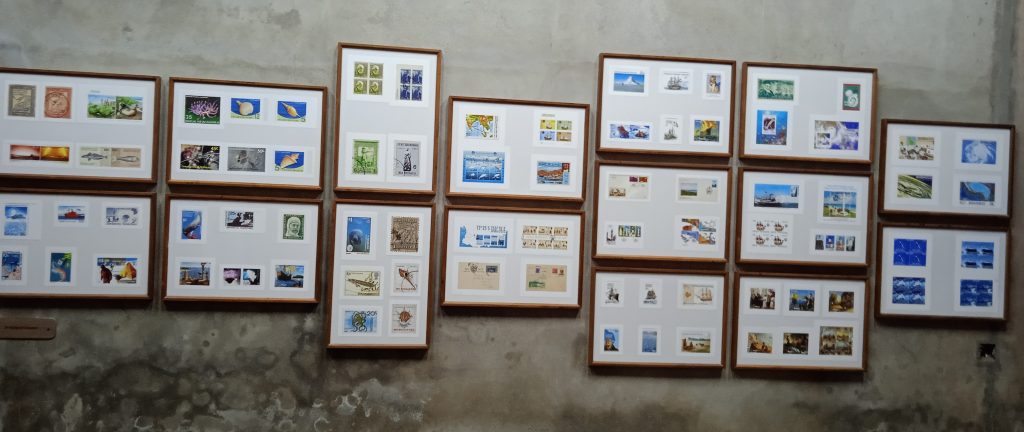
K R Sunil, Kochi-based documentary photographer and visual artist, exhibits his works related to Chavittu Nadakam entitled ‘Chavittu Nadakam: Story Tellers of the Seashore’, bringing diverse ideas together. KR Sunil’s works about the Chavittu Nadakam allude to transnational performance elements active in a community in the coastal route of Kerala, historically linking colonialism and seafaring meetings through the Arabian seacoast. Sunil grabs Chavittu Nadakam performers in front of their tiny homes with splendid, luxurious performance getups. In this project, Chavittu Nadakam surpasses notions in pictorial representations; the lives matters of the performers are the under-weaving element of this visual dialogue. In some images, Chavittu Nadakam performers stand in front of their houses engulfed by water, which carries us to other regions of social realities communed to them and us.
‘With colourful costumes and jewels of royal figures, the performers who otherwise struggle to make ends meet push the boundaries of caste and the web of hierarchies it creates. This work is a documentation looking more deeply into the everyday life of the performers from close quarters, writing Sunil in the concept note. In another project, K R Sunil’s tribute to a Jewish family who lived there before and left for Israel, for ‘Sea A boiling Vessel’ that place used as a show site. The show is happening in a historical space and brings the idea of ‘transnational heritage’, that Jewish lineages lead us to two thousand years older migration worldwide, including Kerala. In 1948, when Israel was formed, Jewish historical migration ended, and people from different parts of the world returned to their promising land, including Kerala. When most people return to Israel, someone like Juliet Hallegua’s family stays here, and slowly they feel isolated and decide to leave. K R Sunil’s ‘The Hallegua House’ is a visual memory of a historical monologue that brings geographical dialogue and human interactions.
Aazhi Archives brings late artist K P Krishnakumar’s work Boatman in this show; that work narrates a metamorphosis of a man- a man becomes an anchor or anchor embodied by a man. ‘Krishnakumar addressed contemporary Indian art and ideology from the position of radical political praxis, interrogated the political in practice and from the standpoint of marginality and problematised art-making in a radical manner, write Shivaji Panikkar in the concept note.
Krishnakumar’s radical thoughts about the art practice and the social life of a human being think with materials differently and make artwork. His idea of artwork creation is to understand human and material life, where they meet and blend. His ‘Boatman’ is a sculpture of a time that brings many things together, including the fisherman’s life and how they embodied the act of fishing more than a life story of a fisherman. This work carries the history of fishing, and the body of a fisherman conveys the historical connectivity through time.
Goa-based multimedia artist Midhun Mohan’s project brings the idea of the natural and unreal life of a ‘migrant-dominated’ village in Kerala and the GCC countries. The way people’s imagination starts and works with exotic backdrops of date palm gardens, high-rise buildings, costly roadways, imported posh cars, and other marvels of the then-emerging gulf territory supplied a fantasy space for settlers and locals alike in the 1980s. The main focus of this project is where these ‘unreal’ locations and dreams are set in the backdrops of new fantasy areas and how they convey all things together.
In the 1980s, Kerala’s photo studios carried painted backdrops of waterfalls, gardens, posh cars, and highways. They imagine their presence somewhere they are not really ‘in’. Through this shifting, they overcome everydayness and try to escape the harrowing migration experience through this backdrop. These backdrops do not simply make something but mediate their life; they have gone through it. In the gulf, posing for a photo in Arab dress was an exploration of fantasy that brought them into another location in their life. ‘The painted backdrops and posters kept in photo studios created dream-like sequence conflating time and space, writes M H Ilias.
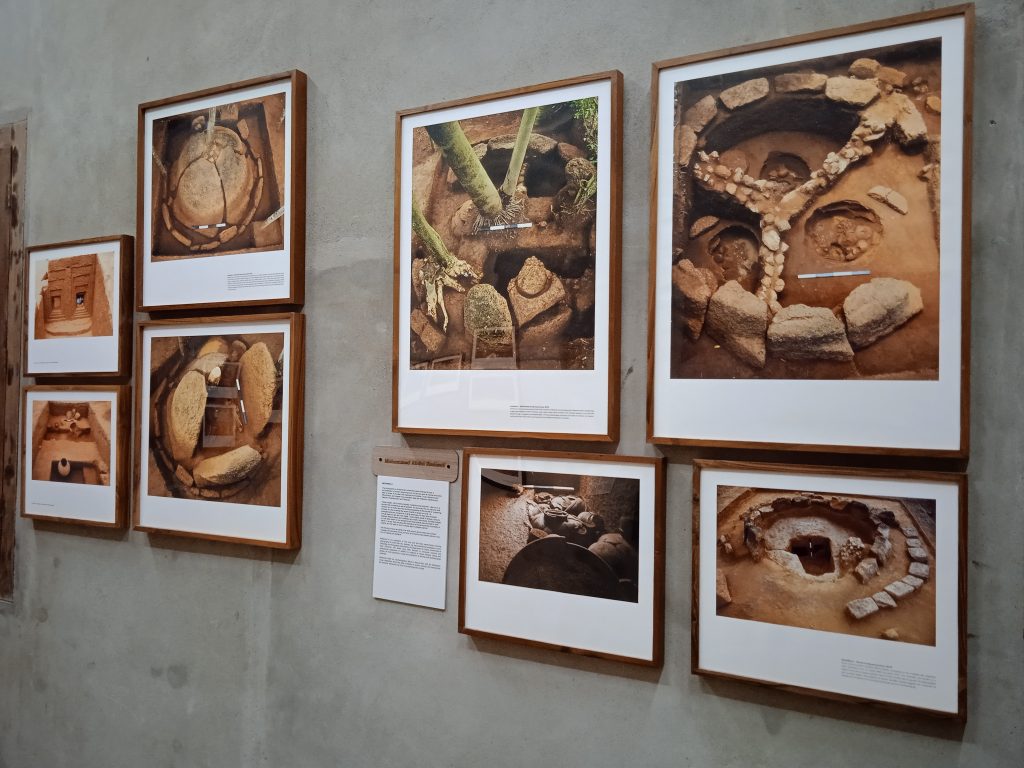 Kerala-based Photographer and visual artist, A Muhamed works tell about Kerala’s history through archival and archaeological materials. He brings the historical documentation of various excavation sites in Kerala, like Edakkal, Tovari, Marayoor and Ettukudukka, Anakkara, Kadampuzha, Kakkodi, Parabathukavu, and Pattanam. Muhamed took photographs of engravings and rock art and images of excavation sites. This photo documentation reveals the idea and the history of Kerala. ‘These images- all too real but equally mysterious and enigmatic- take us on a material and abstract journey. It is also about the exciting experience of unearthing the past. It is like unveiling the layers of earth to reveal our roots, writes C S Venkiteswaran.
Kerala-based Photographer and visual artist, A Muhamed works tell about Kerala’s history through archival and archaeological materials. He brings the historical documentation of various excavation sites in Kerala, like Edakkal, Tovari, Marayoor and Ettukudukka, Anakkara, Kadampuzha, Kakkodi, Parabathukavu, and Pattanam. Muhamed took photographs of engravings and rock art and images of excavation sites. This photo documentation reveals the idea and the history of Kerala. ‘These images- all too real but equally mysterious and enigmatic- take us on a material and abstract journey. It is also about the exciting experience of unearthing the past. It is like unveiling the layers of earth to reveal our roots, writes C S Venkiteswaran.
In ‘Early Indian’, Kerala muralist P K Sadaanandan brings the idea of ancient people of this geographical location. He looks into the homo-sapiens history through his art practice. ‘While doing so, Sadaanandan brings us to critically interrogate the politics of communalism that has become one of the pressing points of classification of the body into caste, race, tribe in recent times’, writes Anuj Daga.
Parag Soanrghare’s ‘the foot’ give an idea of a ‘foot’ of lower socio-economic strata. Large canvas paintings bring a new form of hyper-realistic work, marking the time of a man who manages his whole life in a lower-class-caste status. ‘By stretching the folded pleats of the body, he opens up the various forces of time that materially condition the body. At first glance, the foot makes us think of an unattended body that many have accumulated neglect over time, writes Anuj Daga.
Dr M. R Ramesh Kumar, a scientist by profession and philatelist by passion, brings an extensive collection of stamps to this show that shows how these stamps represent maritime history. Ramesh Kumar started his stamp collections early on and focused on theme-based collections. Ramesh Kumar stamps from different parts of the world on various topics, such as Freedom fighters of India, Revolutionary Freedom fighters, women Freedom Fighters, Scientists of India, World War 1 and 2, Unsung Heroes of India and Biodiversity in India. Ramesh Kumar worked at the National Institute of Oceanography Dona Paula Goa for 37 years, so he started stamps with a theme of ‘Oceans, Explorers, and Maritime Heritage and Lighthouses’.
Artist Siji Krishnan’s ‘Vanishing Portraits’ brings a landscape familiar as ‘Kerala’ with a coconut tree and the ambience. ‘Everything here is misty and mystical: the landscape is washed in yellowish-greys, and the mood is liminal, writes C S Venkiteswaran. Reverse Land by Sumedh Rajendran, Metancherri by Sunil Nampu, Untitled painting by T. V Santhosh, The Mattancherri Story: Lost Opportunities, Mixed Priorities & Resilient Communities by Urban Design Collective, Seeing is Believing Biju Ibrahim, Time pass by K K Muralidharan are also part of this show.
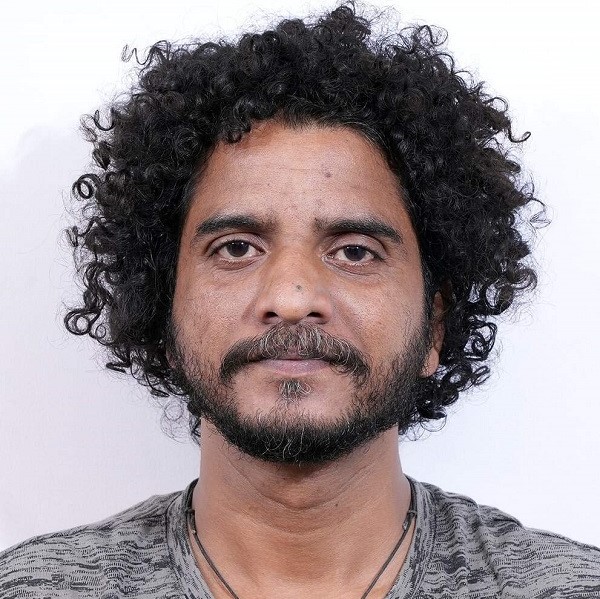
Krispin Joseph PX, a poet and journalist, completed an MFA in art history and visual studies at the University of Hyderabad.

